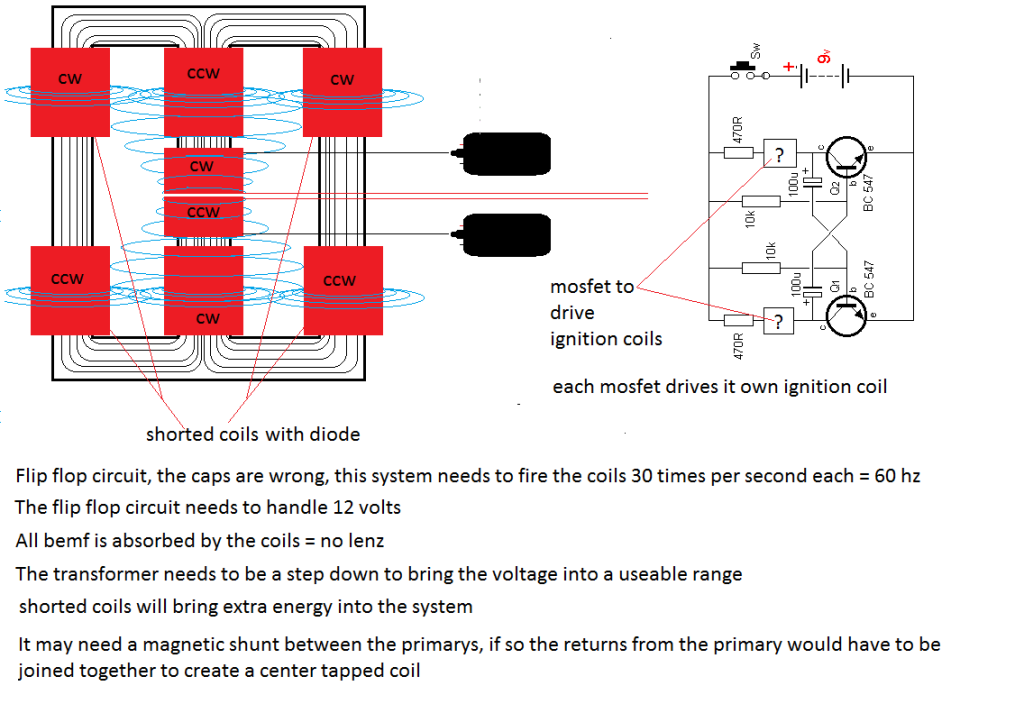Mopozco demonstrates a very simple A.C. inverter circuit in this short 46 second video. It runs off 1.5 volts and a ONE TRANSISTOR oscillating circuit (TROS). He places two ferrite toroid tubes back to back: One, a single wire, simply wound around the outside, and the other, a serial wired bifilar, (JT style). Mopozco calls this a transformer; More aptly a (Transformer Inverter) and it should power the primary of a BIIT, with a recovery circuit and diode protection, much more efficiently then the flip flop version. In addition, he lights a second LED lamp off the JT BEMF. This one's really hard to beat!
TROS - "transformer" - YouTube
TROS - "transformer" - YouTube


 Yes I suppose I will have to, Im just trying to explain so you will understand how any free energy device works.
Yes I suppose I will have to, Im just trying to explain so you will understand how any free energy device works.
Comment